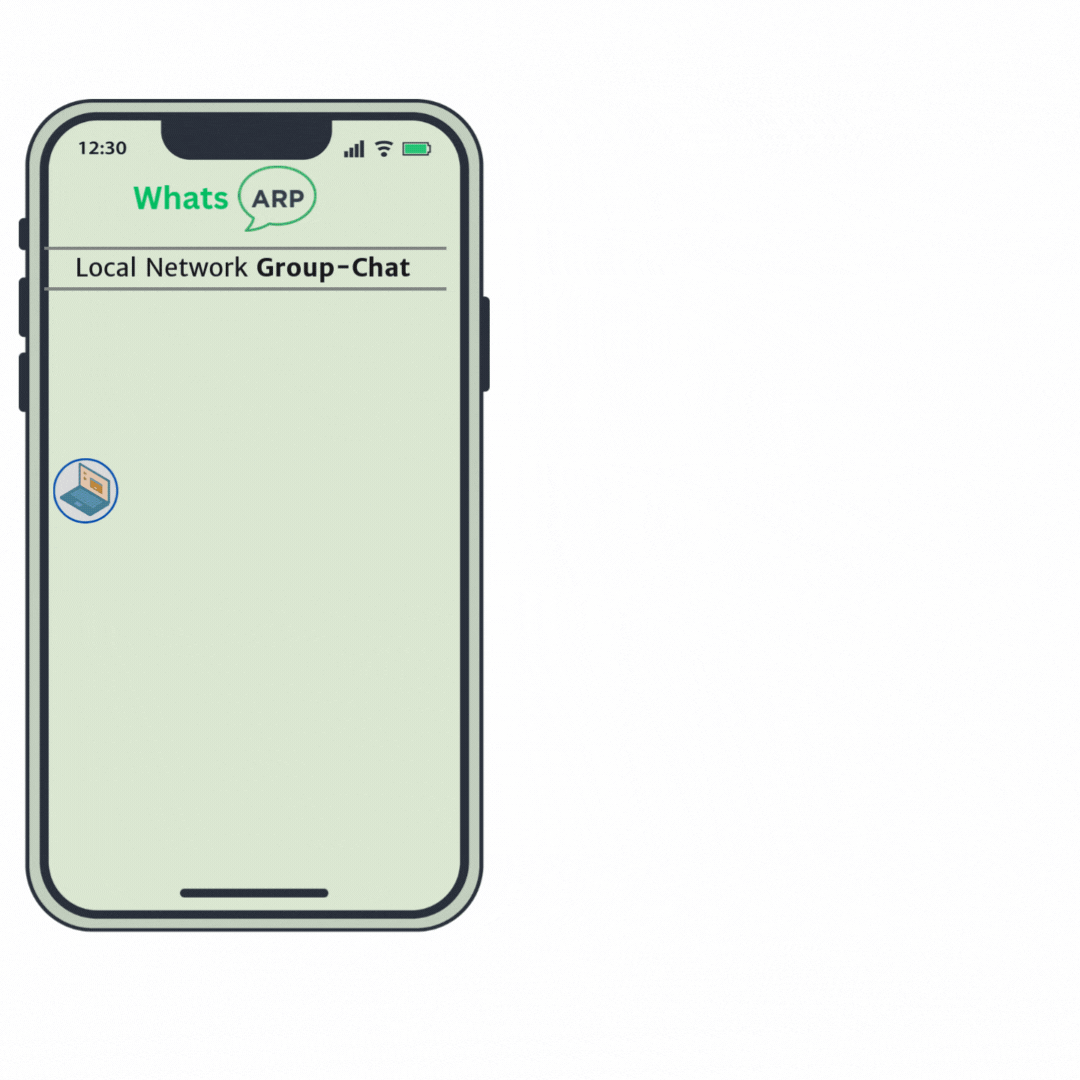Whats ARP?
A colleague recently asked me to explain ARP to them. Rather than pursue the traditional route, I wanted to explore an alternative method and explain it by analogy. I wanted to experiment with an analogy to What App messaging – and called the analogy WhatsARP?
ARP is a fundamental networking protocol, and stands for Address Resolution Protocol. It is used when a message is received by a computer with a destination IP address. The computer (blue) knows that a computer with that IP Address lives somewhere locally, but doesn’t know exactly where.
It needs to learn the destination MAC address to add when it packages the layer-3 ‘packet’ into a layer-2 ‘frame’.
How to message them if don’t know their number?
In the analogy below, a packet arrives at a computer with IP address 192.168.1.5. The computer needs to find out the MAC address of a computer but can’t message it to ask…. well. … because it needs the MAC address to send it a direct message. Infinite loop.
In this analogy we’ll assume that everyone on the local IP network belongs to the same group chat. The solution here is simple but noisy. Send a broadcast… ask everyone in the chat:
‘hey are you using the ID 192.168.1.5, if so, just respond with your direct number (MAC address).’
The current owner of IP address 192.168.1.5 replies with its MAC address 0000:1111:1234.
As shown below the reply is sent directly rather than broadcast, because the 0000:1111:1234 just learned the Mac address of the blue laptop, so it uses that as the new destinations.

Once bother parties have each others MAC address the can continue to message directly without disturbing their colleagues.. They found each other now and can talk about golf, fashion, MMA or GAA to their hearts content, without disturbing anyone else.
Take away
This was a a fun experiment. Learning how to use Canva to create GIPHY animations. When I posted this on LinkedIn I received a ton of feedback, but mainly comments that the animation was too fast.
I wil definitely explore the use of GIPHY animations in the future, however I think it would be as a complement to traditional explanations rather than as a replacement.
